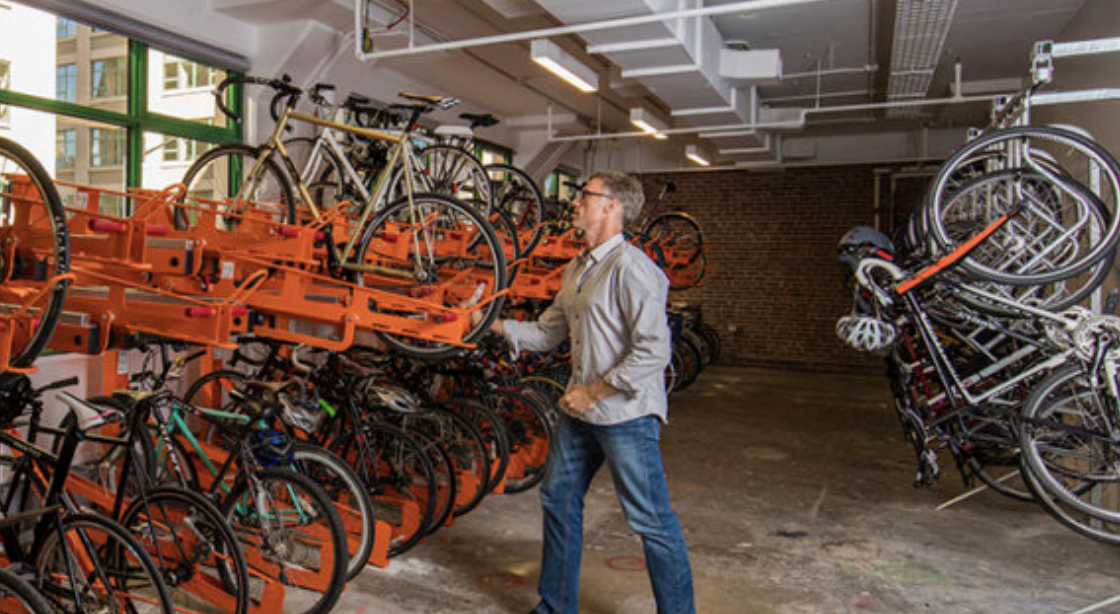The Building Standards Commission is updating the California Building Standards Code sections governing bicycle parking, pursuant to a 2022 law that CalBike helped pass. That law requires bicycle parking standards to be added to the code during its next update.
The commission is seeking public comment by July 1, 2024. You can view the proposed rules online. CalBike has sent in a comment letter[PDF], and so can you. Send comments to cbsc [at] dgs.ca.gov.
Why Bicycle Parking Matters
A safe place to store a bike is essential if people are going to adopt the bicycle for everyday transportation. Bicycle theft is widespread, and leaving a bike out in the elements can increase wear and cause it to require more frequent maintenance. With the popularity of e-bikes, theft is an even bigger consideration. So the availability of secure bike parking in residential buildings is essential for bike riders.
Car parking adds to the expense of building, reduces the space available for housing humans, and encourages more driving. But bicycle parking is much more space efficient, and ample, secure bike parking in a residential building or at a business incentivizes and normalizes active transportation.
Bike parking is a nerdy and arcane topic. But, like many such topics, it has a crucial role to play in our move toward more climate-friendly transportation.
CalBike Recommendations
The Building Standards Code will set minimum requirements for bicycle parking in new and remodeled residential and commercial buildings. Cities can have stronger requirements but must at least adhere to these minimums.
The commission has proposed a change to require 0.5 long-term bike parking spots per unit in residential buildings. We think that’s not enough, and recommend doubling that to one spot per unit. These spots must include some that can accommodate longer or wider bikes, such as cargo bikes and adaptive bicycles. In addition, the parking area needs outlets for e-bike charging.
We also recommend requiring bike parking to be close to and easy to find by visiting bike riders, and visible to passersby to discourage theft.
For commercial spaces, the standard for requiring additional bike parking when remodeling is vague and will be difficult, if not impossible, to enforce. It would rely on a hard-to-measure standard of increased foot traffic, which could lead to exemptions to rules calling for more bike parking. Indeed, this is the current situation where most building alterations result in no bicycle parking, either short-term or long term.
But mobility options have expanded, and active transportation is much more important and popular than ever before. Thus, the previously accepted standard that bicycle parking isn’t required no longer applies. CalBike strongly urges the commission to eliminate proposed exemptions. We believe the code should require businesses that don’t meet current standards to upgrade bicycle parking when they remodel or make improvements.
California encourages the adoption of EVs of all kinds, and we urge the state to consider all the charging needs for all vehicle types in new and existing, unmodified buildings. We endorse the work of the EV Charging for All Coalition in highlighting these issues, and urge the commission to look to that group for guidance.
In particular, we echo EVCAC's comments that setting a minimum width for parking spots with EV charging is inappropriate and moves in the wrong direction by encouraging ever larger and heavier vehicles.
See CalBike's letter [PDF] for more details.






